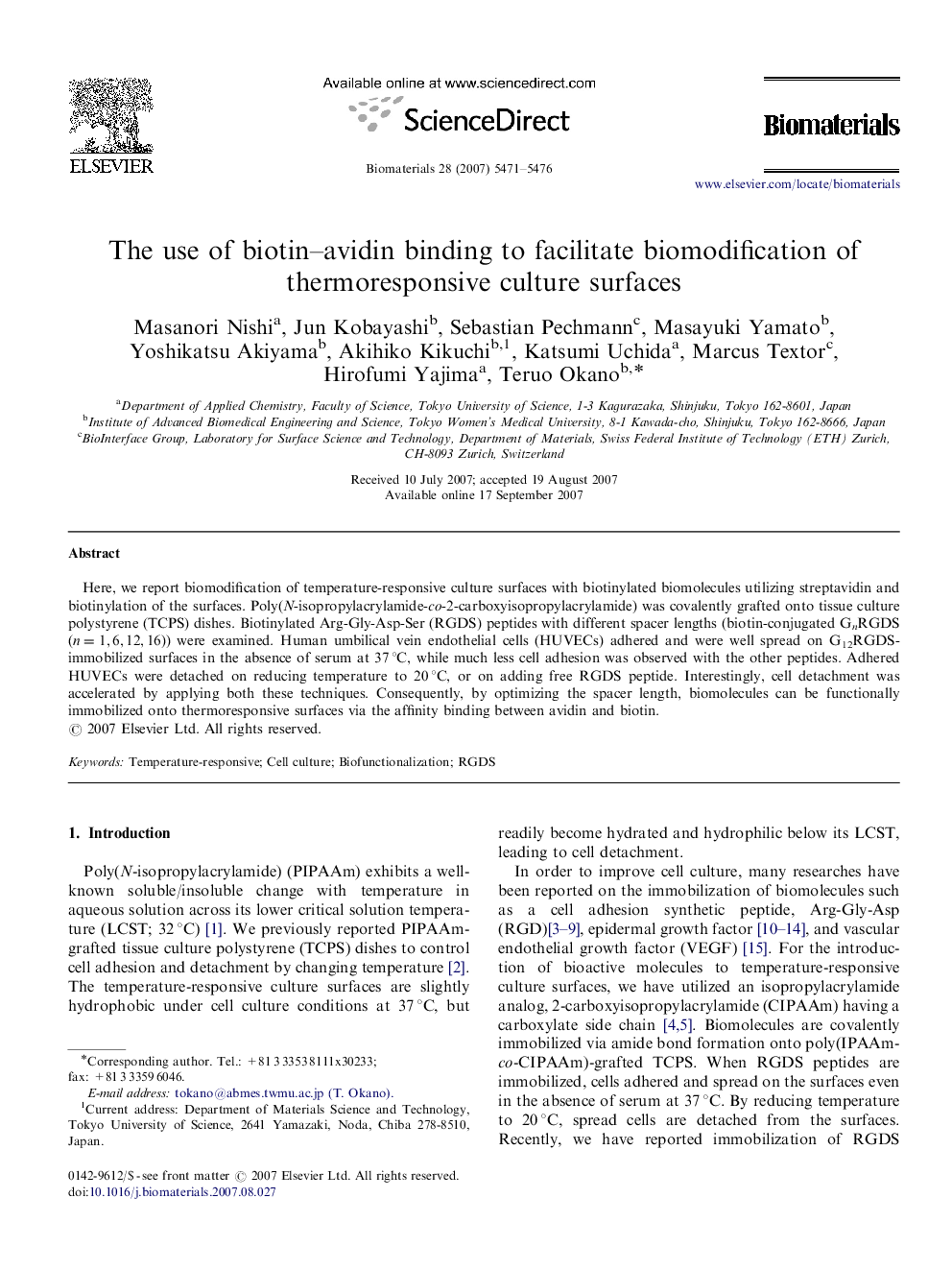| Article ID | Journal | Published Year | Pages | File Type |
|---|---|---|---|---|
| 10352 | Biomaterials | 2007 | 6 Pages |
Here, we report biomodification of temperature-responsive culture surfaces with biotinylated biomolecules utilizing streptavidin and biotinylation of the surfaces. Poly(N-isopropylacrylamide-co-2-carboxyisopropylacrylamide) was covalently grafted onto tissue culture polystyrene (TCPS) dishes. Biotinylated Arg-Gly-Asp-Ser (RGDS) peptides with different spacer lengths (biotin-conjugated GnRGDS (n=1, 6, 12, 16)) were examined. Human umbilical vein endothelial cells (HUVECs) adhered and were well spread on G12RGDS-immobilized surfaces in the absence of serum at 37 °C, while much less cell adhesion was observed with the other peptides. Adhered HUVECs were detached on reducing temperature to 20 °C, or on adding free RGDS peptide. Interestingly, cell detachment was accelerated by applying both these techniques. Consequently, by optimizing the spacer length, biomolecules can be functionally immobilized onto thermoresponsive surfaces via the affinity binding between avidin and biotin.
